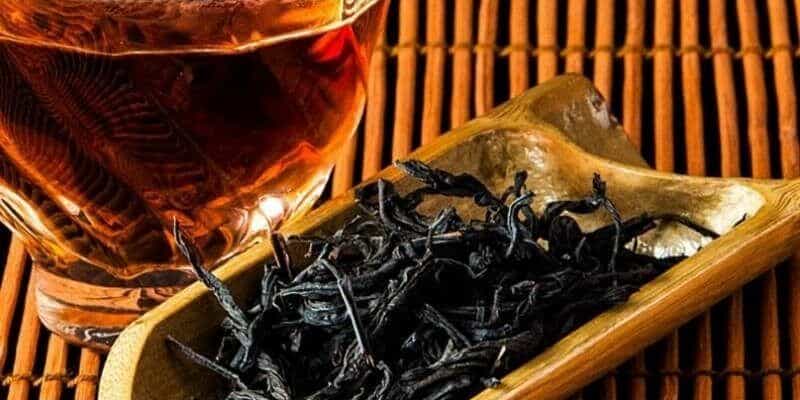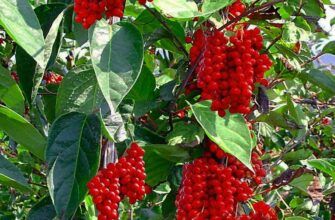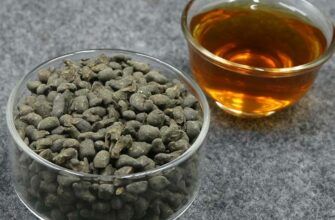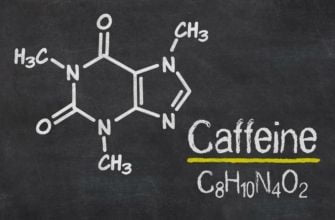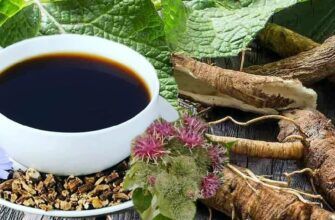Dark tea is fermented tea with over four hundred years of history. In China, it is called "Tea sold abroad" (Bian Xiao Cha), literally, this tea is sold at the western borders in the form of briquettes.
The name of this tea also comes from the color of the dried tea leaves, since this tea is made from old, coarse leaves and fermented for a very long time. In the production areas, we can find such varieties as Huan Hei Cha, Hubei Hei Cha, Sichuan Wei Cha, Diangi Hei Cha, etc.
For those who love delicate green tea, the taste of Hei Cha will seem very unusual and strong, but over time, continuing to drink dark tea, you will definitely fall in love with its deep, mild taste. Hei Cha has gained popularity in Yunnan, Sichuan and Guangxi. It is also a favorite tea in Tibetan, Mongolian and Uyghur cultures.
- History of dark tea
- Types of dark tea:
- Sichuan Pu'er Tea
- Hubei Hei Cha (Hubei Dark Tea, Hubei Hei Cha)
- Lao Qin (Laoqing Tea)
- Hunan Hei Cha (Hunan Dark Tea, Hunan Hei Cha)
- Ding-Gu (Dian-Gui Dark Tea)
- Yunnan Pu'er Tea
- Li Pu (Liupu Tea)
- Li Dong (Liudong Tea)
- Dark Tea Health Benefits
- Dark tea replenishes nutritional deficiencies
- Hei Cha has anti-mutagenic properties
- Hei Cha helps in lowering blood pressure
- Reduces blood sugar levels
- Bactericidal and anti-inflammatory action
History of dark tea
The legend says that one day a caravan traveling along the Great Silk Road got caught in the rain, and the tea, moistened with rainwater, spoiled. The tea merchants could no longer make a profit on this tea, but they could not simply throw this tea away. The following year, dysentery broke out in the village and many people died. People had nothing to eat, and the tea merchants gave moldy tea to the poor. A miracle happened: sick people recovered from their illness.
But according to the records, dark tea appeared much earlier than the events described in the legend took place. According to the Ming History, "In the thirteenth year of Shi Tsong (1585 CE), tea was traded for horses to overseas merchants, and since tea was cheap, it was a very profitable business."
Types of dark tea:
Sichuan Pu'er Tea
Mainly produced in Yibin and neighboring areas of Sichuan
Hubei Hei Cha (Hubei Dark Tea, Hubei Hei Cha)
Lao Qin (Laoqing Tea)
Mainly produced in Chi Bi, Cao Ling, Ton Shan, Chong Yan of Hubei Province
Hunan Hei Cha (Hunan Dark Tea, Hunan Hei Cha)
Ding-Gu (Dian-Gui Dark Tea)
Yunnan Pu'er Tea
Li Pu (Liupu Tea)
Originally made in Li Pu, Shan Wu, Guangxi Province, now manufactured in over 20 districts in Guangxi Province
Li Dong (Liudong Tea)
Produced in Qin An, Guangxi Province
Dark Tea Health Benefits
Dark tea replenishes nutritional deficiencies
Dark tea (Hei Cha) contains many nutrients, a huge amount of vitamins and minerals, as well as proteins, amino acids, sugars. Dark tea helps digestion and the digestive tract. Also, this tea regulates metabolism, stimulates the production of caffeine, increases the secretion of gastric juice, thereby improves appetite and helps digestion, helps in weight loss, and regulates blood sugar levels.
Dark teas are rich in antioxidants, such as catechins, tea pigment, flavonoids, contain vitamin C, vitamins E, D, A-carotene, and contain many trace elements. Dark tea has antioxidant properties because it contains zinc, manganese, and copper. Dark tea catechins, theaflavins, theanine and various polysaccharides of a more complex content, perform an antioxidant function, absorbing free radicals and delaying cell aging.
Hei Cha has anti-mutagenic properties
A study conducted at Hunan Agricultural University with a tumor cell model using advanced high-throughput screening technology proved that Hei Cha has a significant inhibitory effect on tumor cell growth.
Hei Cha helps in lowering blood pressure
Recently, the Japanese have reported that theanine, a unique amino acid, is able to activate dopaminergic neurons, which lowers blood pressure. In addition, the catechins and caffeine contained in tea strengthen the walls of blood vessels and dilate them, which reduces blood pressure.
Reduces blood sugar levels
Hei Cha is used to improve carbohydrate metabolism, lower blood sugar and prevent diabetes. Hei Cha polysaccharide complex is the main component that lowers blood sugar levels. Studies have shown that Hei Cha has the highest polysaccharide content compared to other types of tea. In addition, the Hei Cha polysaccharides are more active than the polysaccharides of any other tea. This is because Hei Cha peptide chains are relatively short, and the glucosidase, protease, and hydrolase formed by them are more easily absorbed and more active. This is why Hei Cha is superior to any other tea in its ability to lower blood sugar levels.
Bactericidal and anti-inflammatory action
The main components that have an anti-inflammatory effect - theaflavin and rubigin, are contained in Hei Cha in large quantities (which is why Hei Cha has such a rich color). Studies have shown that thiaflavin acts not only on free radicals, but also has an antibacterial effect, helping in the treatment of botulism, Staphylococcus aureus and other bacteria. In addition, theaflavin has an inhibitory effect on influenza viruses, rotavirus, enterovirus.
The caffeine contained in Hei Cha stimulates the filtration of water through the kidneys. In addition, caffeine stimulates the activity of the bladder. Hei Cha polyphenols also help eliminate nicotine through the urine, reduce the effects of free radicals in tobacco smoke, and reduce the toxic effects of smoke on human health. Tea polyphenols also effectively invite heavy metals, mitigating their toxic effects.
Read more: